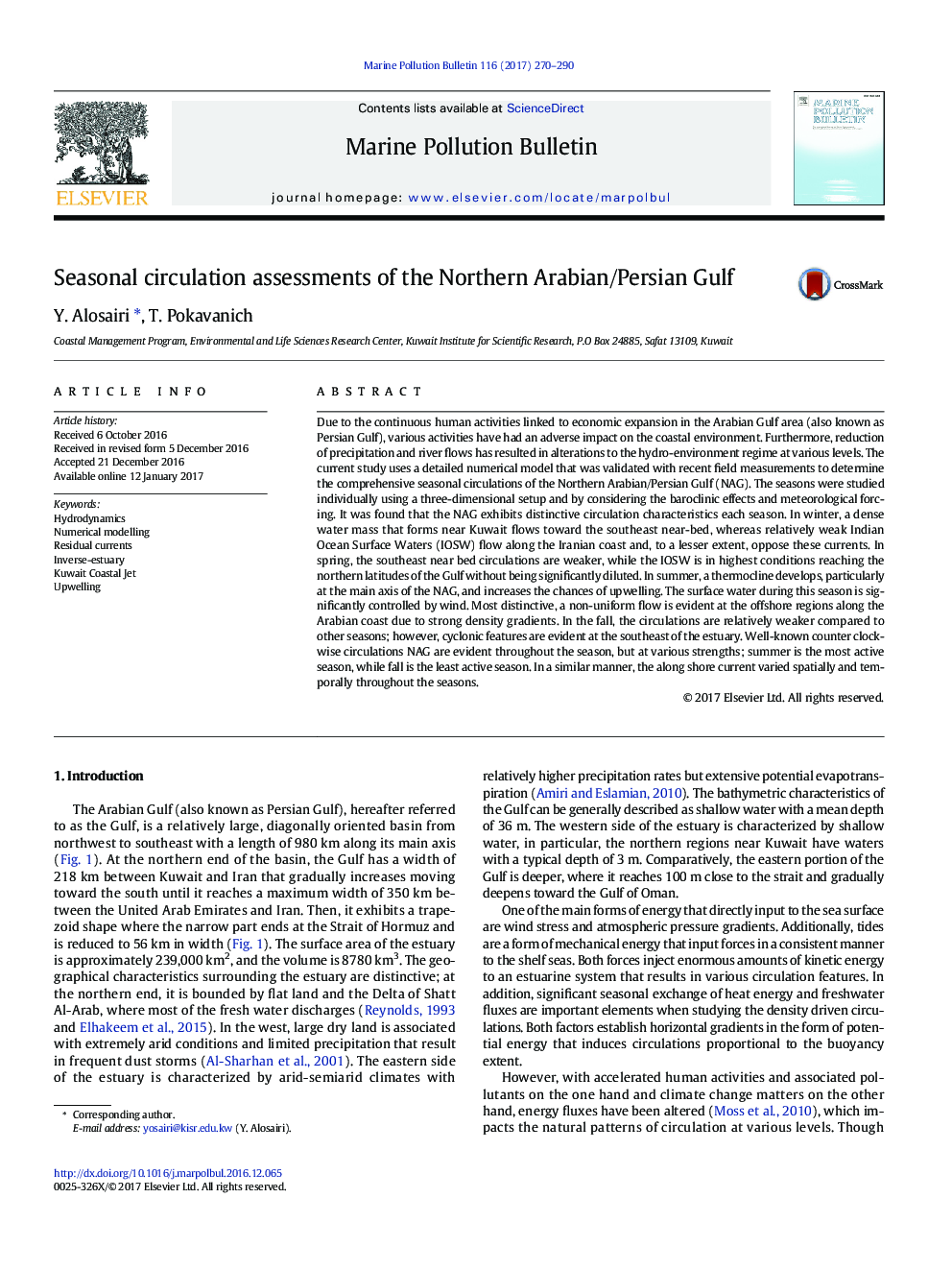| Article ID | Journal | Published Year | Pages | File Type |
|---|---|---|---|---|
| 5757607 | Marine Pollution Bulletin | 2017 | 21 Pages |
â¢Three-dimensional model was used to study the seasonal hydrographical features of the Northern Arabian/Persian Gulfâ¢The hydrodynamic condition was validated with Mt. Mitchell expedition data and some recent field.â¢The model successfully reproduced the seasonal hydrographic characteristics and show variations from season to season.â¢The seasonal three-dimensional residual currents of the NAG were reproduced by the model.
Due to the continuous human activities linked to economic expansion in the Arabian Gulf area (also known as Persian Gulf), various activities have had an adverse impact on the coastal environment. Furthermore, reduction of precipitation and river flows has resulted in alterations to the hydro-environment regime at various levels. The current study uses a detailed numerical model that was validated with recent field measurements to determine the comprehensive seasonal circulations of the Northern Arabian/Persian Gulf (NAG). The seasons were studied individually using a three-dimensional setup and by considering the baroclinic effects and meteorological forcing. It was found that the NAG exhibits distinctive circulation characteristics each season. In winter, a dense water mass that forms near Kuwait flows toward the southeast near-bed, whereas relatively weak Indian Ocean Surface Waters (IOSW) flow along the Iranian coast and, to a lesser extent, oppose these currents. In spring, the southeast near bed circulations are weaker, while the IOSW is in highest conditions reaching the northern latitudes of the Gulf without being significantly diluted. In summer, a thermocline develops, particularly at the main axis of the NAG, and increases the chances of upwelling. The surface water during this season is significantly controlled by wind. Most distinctive, a non-uniform flow is evident at the offshore regions along the Arabian coast due to strong density gradients. In the fall, the circulations are relatively weaker compared to other seasons; however, cyclonic features are evident at the southeast of the estuary. Well-known counter clockwise circulations NAG are evident throughout the season, but at various strengths; summer is the most active season, while fall is the least active season. In a similar manner, the along shore current varied spatially and temporally throughout the seasons.
